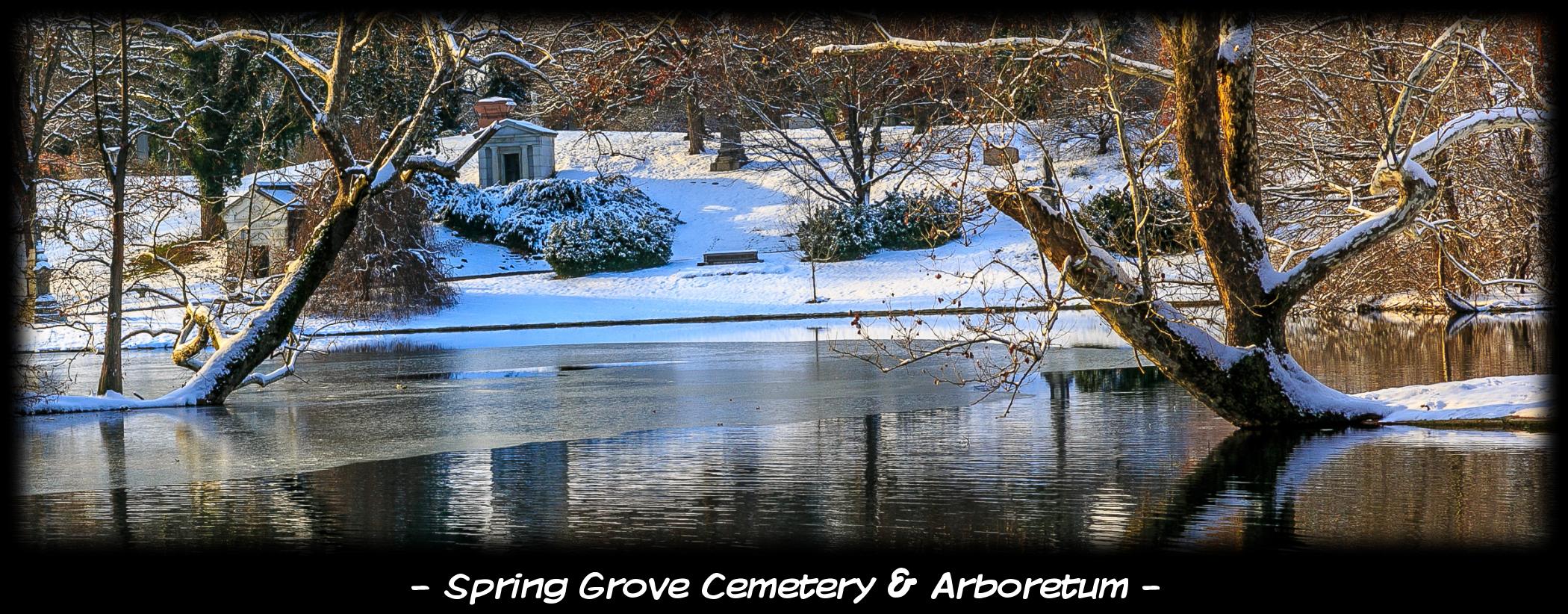Garden Details:
A brief history of Spring Grove Cemetery & Arboretum
On April 13, 1844, Robert Buchanan (the first president of the Cincinnati Horticulture Society) convened a meeting at his home to investigate a "movement for the procuring of grounds for a rural or Public Cemetery." Thus began the Cincinnati Horticulture Society's endeavor to develop a cemetery close to, but outside of, the city of Cincinnati. Bringing the Society's interest in horticulture to the design and improvements of the grounds, they sought topographically diverse land to which they could apply picturesque aesthetics as described by such authors as Bryant and Wordsworth.
Buchanan, who also was elected the first president of Spring Grove Cemetery, insisted on terrain with wet lands that could "easily be converted into ponds," appropriate for cultivation of aquatic plants and conducive to creation of a romantic landscape in the English fashion. After the dedication, on August 28th of 1845, of the first 220 acres, cemetery management (a president and a board of directors comprised of holders of lots of at least fifty square feet, which included businessmen and professionals as well as blacksmiths, saddlers and printers), and superintendent Howard Daniels oversaw the development not only of the cemetery layout, but a diverse and expansive collection of ornamental plants. References suggest that some 4,300 plant varieties were being grown at the cemetery by 1850.
Aldolph Strauch's tenure heralded a major change not only in how Spring Grove was further developed, but in how most major cemeteries of the time came to design their landscapes. His landscape-lawn plan, which, in those portions of the cemetery developed before his arrival, did away with fences and hedges around individual lots, permitted only a single monument per lot (with flush markers for individual graves), required the approval of the superintendent and Board of Directors for the design of all monuments, and assigned all planting within the lots to the superintendent, effectively decluttered a landscape that had been accumulating the disparate design whims of the many individual lot owners. The popularity of this layout was such that numerous cemeteries consulted Strauch for the revision of their own landscape layouts, while others emulated the style on their own. Spring Grove Cemetery & Arboretum was designated as a National Historic Landmark in 2007, primarily by virtue of its significance as the original site and model of the landscape-lawn concept of cemetery design.
In 1987, recognizing the Cemetery’s active involvement in forestry, nursery, and horticultural activities, the Board of Trustees formally adopted the name Spring Grove Cemetery and Arboretum.
Spring Grove Today
Visitors to Spring Grove Cemetery & Arboretum will find more than 1,300 different labeled trees and shrubs (Collections Booklet) that have been thoughtfully planted throughout the approximately 400 developed acres. Among the diverse specimens, thirty are State Champion trees. Many venerable Centenarians can also be found out on the grounds, including the 400 year old Quercus alba (white oak) in section 101 (Visitors Map).
